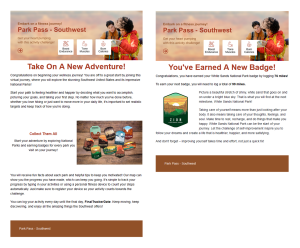Your Complete Guide to Gamified Wellness Challenges in 2025

In our recent exploration of 2025 workplace wellness trends, we highlighted gamified wellness challenges as a key driver of employee engagement and health outcomes. As organizations increasingly recognize that traditional wellness programs often fall short of sustained participation, gamification has emerged as a powerful solution that transforms health initiatives from mundane tasks into engaging, competitive experiences.
The data speaks for itself: companies implementing gamified wellness challenges report participation rates 2-3 times higher than traditional programs. But success isn’t automatic—it requires strategic planning, thoughtful execution, and a deep understanding of what motivates your workforce.
Why Gamified Wellness Challenges Work
Gamification taps into fundamental human psychology by incorporating elements of competition, achievement, and social connection. When wellness initiatives feature friendly competition, team-based challenges, and tangible rewards, employees are more likely to participate and sustain healthy behaviors long-term. The key lies in making health-related activities interactive, competitive, and genuinely engaging rather than feeling like another workplace obligation.
10 Essential Strategies for Successful Wellness Challenges
1. Know Your Audience Inside and Out
Before launching any challenge, invest time in understanding your workforce. Analyze health assessment data, conduct interest surveys, and review past program performance to identify what resonates with your employees.
The most successful challenges in recent years have included movement-based initiatives like “Make a Move,” hydration challenges such as “Hydrate for Life,” sleep optimization programs like “Sleep Smart,” and stress management challenges including “Relax & Revive.” Understanding these preferences allows you to design challenges that align with your employees’ interests and health priorities.
2. Set SMART Goals That Inspire Action
Establish goals that are Specific, Measurable, Achievable, Relevant, and Time-Bound. Clear objectives provide direction and enable participants to track meaningful progress.
Effective examples include drinking 6-8 glasses of water daily for 30 days, achieving 6-8 hours of quality sleep nightly for two weeks, or completing 10,000 steps daily for a month. These concrete targets give participants clear benchmarks for success while remaining attainable for most fitness levels.
3. Create a Multi-Channel Communication Strategy
Successful challenges require consistent, engaging communication across multiple touchpoints. Develop a comprehensive campaign that includes email updates, physical flyers, social media engagement, and in-app notifications.
Your communication plan should include pre-challenge excitement building, regular progress updates, motivational messages, inactivity nudges, and celebration of achievements. Consider creating dedicated social media pages or discussion boards where participants can share progress, tips, and success stories.
Sample Communication Materials
4. Make It Genuinely Fun and Engaging
The “game” in gamification should be enjoyable, not forced. Incorporate elements like progress badges, milestone celebrations, surprise bonus challenges, and interactive leaderboards. Create themes that resonate with your workforce—perhaps a “step around the world” virtual travel challenge or a “superhero training” fitness initiative.
5. Leverage Technology for Seamless Tracking
Offer multiple tracking options to accommodate different preferences and comfort levels with technology. While manual logging should always be available, integrating wearable devices creates a frictionless experience that encourages sustained participation.
Current data shows Apple HealthKit (40%), Fitbit (30%), and Google Fit (10%) as the most popular connectivity options. The key is making tracking as effortless as possible while maintaining data accuracy and participant trust.
6. Foster Team Spirit and Community
Transform individual health goals into shared experiences through team formation and group challenges. Organize team events, highlight group accomplishments, and maintain visible leaderboards that showcase both individual and team progress.
Team-based challenges create accountability, social support, and friendly competition that keeps participants engaged even when motivation wanes. Consider mixing departments or creating cross-functional teams to build broader workplace connections.
7. Design a Thoughtful Incentive Structure
Implement a tiered reward system that recognizes both participation and achievement. Small, frequent rewards for reaching incremental goals maintain momentum, while larger incentives for challenge completion provide motivation to finish strong.
Effective incentives range from wellness-related prizes and extra time off to public recognition and preferred parking spots. The key is ensuring rewards align with your company culture and budget while providing genuine value to participants.
8. Incorporate Local and Cultural Elements
Make challenges personally relevant by incorporating local landmarks, community resources, and cultural elements. A walking challenge might feature routes through your city’s historic districts, or a nutrition challenge could highlight local farmers’ markets and healthy restaurants.
This localization makes challenges feel more connected to participants’ daily lives and communities, increasing engagement and making healthy behaviors more sustainable beyond the challenge period.
9. Provide Comprehensive Support and Resources
Equip participants with the tools, information, and support they need to succeed. This includes educational materials about the health benefits being targeted, access to wellness professionals for guidance, and digital resources like tracking apps or instructional videos.
Consider offering lunch-and-learn sessions, creating resource libraries, or providing access to wellness coaches who can answer questions and provide personalized guidance throughout the challenge.
10. Measure, Analyze, and Continuously Improve
Establish clear metrics for success and consistently track performance throughout and after each challenge. Monitor participation rates, completion rates, engagement levels, and health outcomes to understand what’s working and what needs adjustment.
Collect participant feedback through surveys and focus groups to gain insights into their experience. Use this data to refine future challenges, adjusting everything from challenge duration and difficulty to communication strategies and reward structures.
The Technology Advantage
Modern wellness platforms like PDHI streamline challenge management while providing robust analytics and engagement tools. These platforms integrate seamlessly with popular wearable devices, automate progress tracking, and provide real-time insights into participation and outcomes.
Ready to design your next wellness challenge? Contact our team to learn how modern wellness platforms can streamline your program management while maximizing employee engagement and health outcomes.


